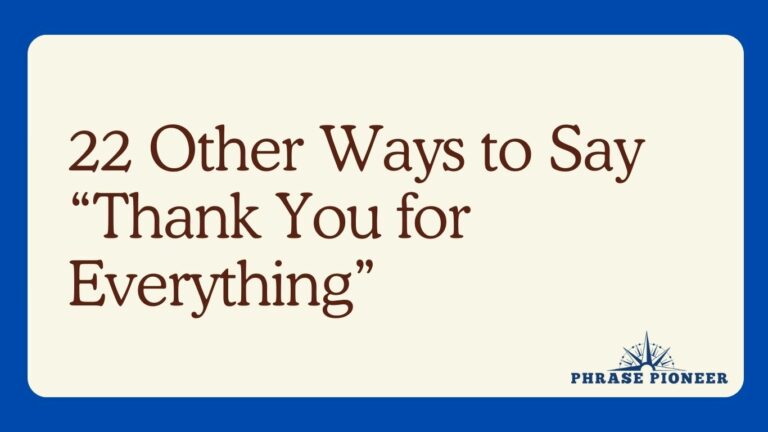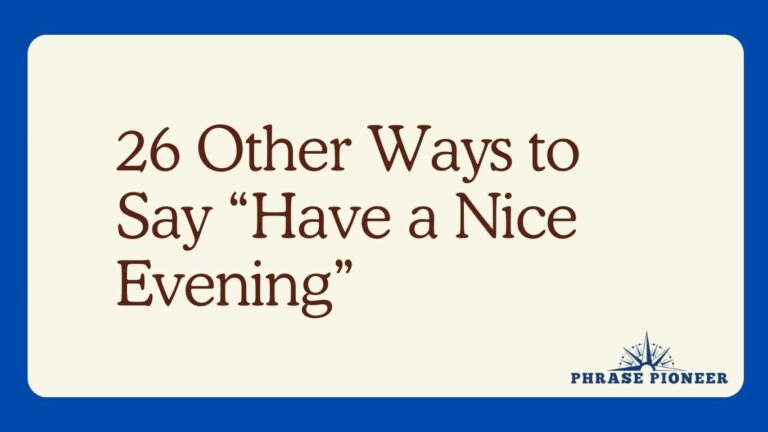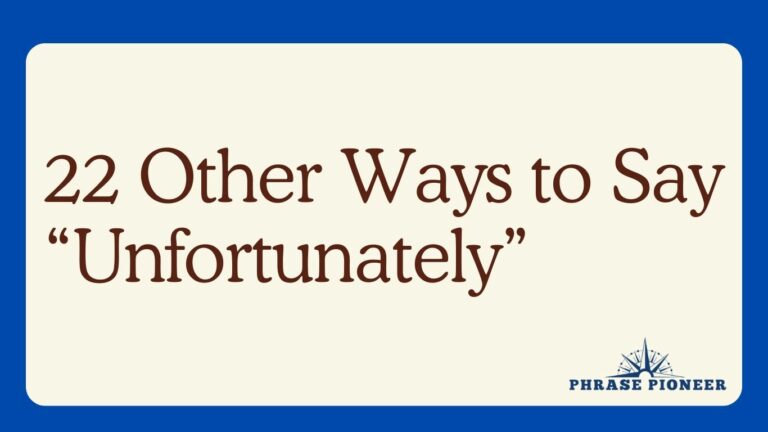23 Other Ways to Ask “Does That Make Sense?”
Ensuring your listener or reader understands your message is crucial in communication.
To verify comprehension without sounding repetitive or condescending, here are 23 alternative ways to ask “Does that make sense?” Each suggestion is followed by an example sentence and an explanation, helping you check for understanding in a considerate and effective manner.
Checks for Clarity:
1. “Am I making myself clear?”
- Example: “We need to improve efficiency by streamlining our processes. Am I making myself clear?”
- Explanation: Seeks confirmation that the explanation was straightforward and understood.
2. “Do you follow what I’m saying?”
- Example: “The software functions in a unique way—do you follow what I’m saying?”
- Explanation: Asks if the listener is keeping up with and comprehending the explanation.
3. “Is all of this landing?”
- Example: “There were several changes to the project plan. Is all of this landing?”
- Explanation: Inquires whether the information presented has been fully received and understood.
4. “Are you with me so far?”
- Example: “It’s a complex theory, I know. Are you with me so far?”
- Explanation: Checks if the listener is still comprehending the details up to the current point in the conversation.
5. “Does this sound logical to you?”
- Example: “Our strategy might seem unconventional at first. Does this sound logical to you?”
- Explanation: Seeks validation that the approach or reasoning presented appears to be reasonable.
Inquiries for Comprehension:
6. “Can you make sense of what I’m saying?”
- Example: “The data can be interpreted in several ways. Can you make sense of what I’m saying?”
- Explanation: Asks if the listener is able to understand the information being conveyed, possibly considering its complexity.
7. “Is this resonating with you?”
- Example: “I want to ensure that the goals I’m setting for the team align with your expectations. Is this resonating with you?”
- Explanation: Checks if the listener feels a connection or understanding with the content or objectives discussed.
8. “Do you grasp the concept?”
- Example: “I’ve covered a lot of material on quantum mechanics. Do you grasp the concept?”
- Explanation: A direct inquiry about the listener’s understanding of a theory or idea.
9. “Have I explained that well enough?”
- Example: “The process may seem complicated on paper. Have I explained that well enough?”
- Explanation: Asks for feedback on the adequacy of the explanation provided.
10. “Are we on the same page here?”
- Example: “We need to cut costs by 20%. Are we on the same page here?”
- Explanation: Inquires if there is mutual understanding and agreement on the point being discussed.
Requests for Validation:
11. “Is that clear?”
- Example: “Let me know if you need further clarification on the policy change. Is that clear?”
- Explanation: Requests a confirmation that the listener understands the information without ambiguity.
12. “Do you see what I mean?”
- Example: “Flexibility in our work schedule could improve productivity. Do you see what I mean?”
- Explanation: Asks the listener if they understand the practical implications of what is being suggested.
13. “Did I get my point across?”
- Example: “This project will require all hands on deck. Did I get my point across?”
- Explanation: Seeks confirmation that the message intended was successfully communicated.
14. “Any confusion about what I’ve said?”
- Example: “The software installation involves several intricate steps. Any confusion about what I’ve said?”
- Explanation: Asks directly if there’s any aspect of the explanation that wasn’t clear or caused misunderstanding.
15. “Does my explanation fit together for you?”
- Example: “The relationship between these variables is critical for analysis. Does my explanation fit together for you?”
- Explanation: Questions whether the listener is able to understand how the parts of the explanation relate to one another.
Ensuring Understanding:
16. “Are there any points that need clarifying?”
- Example: “It’s a lot to take in at once. Are there any points that need clarifying?”
- Explanation: Indicates a readiness to provide additional information or explanation if anything wasn’t clear.
17. “Did that come across the right way?”
- Example: “I don’t want to overwhelm you with details. Did that come across the right way?”
- Explanation: Checks whether the communication was effective and not causing confusion or concern.
18. “Does anyone need me to go over that again?”
- Example: “I’ve outlined our new procedures. Does anyone need me to go over that again?”
- Explanation: Offers the opportunity for reiteration in case the initial explanation wasn’t fully absorbed.
19. “Shall I elaborate on that further?”
- Example: “Once we sequence the DNA, the results will vary. Shall I elaborate on that further?”
- Explanation: Asks if there’s a need for additional detail to enhance understanding.
20. “Is there any part of this that isn’t clear?”
- Example: “The new company policy is outlined in your handbook. Is there any part of this that isn’t clear?”
- Explanation: Invites questions on specific parts of the content that may be confusing.
21. “Do you comprehend the process as explained?”
- Example: “It’s important that everyone knows how to evacuate in an emergency. Do you comprehend the process as explained?”
- Explanation: Seeks confirmation that a serious or important process has been understood.
22. “Would it help if I clarified anything more?”
- Example: “There are a few subtleties at play in this negotiation. Would it help if I clarified anything more?”
- Explanation: Suggests assistance with dismantling any remaining confusion or questions.
23. “Am I communicating effectively?”
- Example: “Safety protocols can be complex to keep track of. Am I communicating effectively?”
- Explanation: Reflects on your own performance and seeks validation that the information is being imparted in a comprehensible way.
These phrases can serve as constructive checks for comprehension, promoting clear understanding while demonstrating patience and the desire to communicate effectively.
Depending on the context, the alternative expressions can be casually conversational or more formal and professional.







